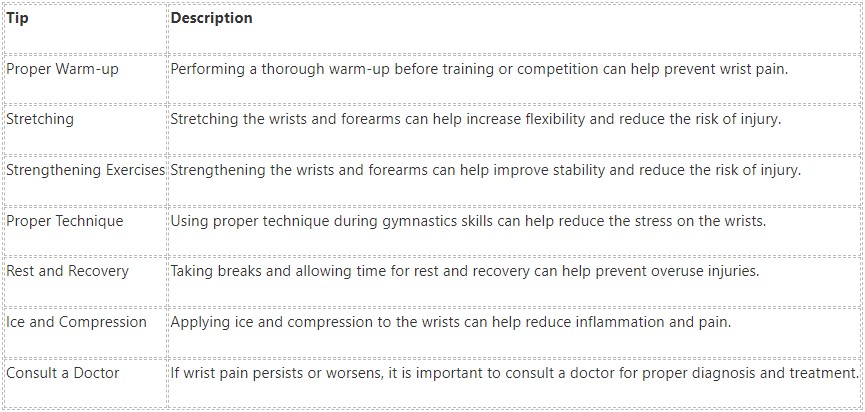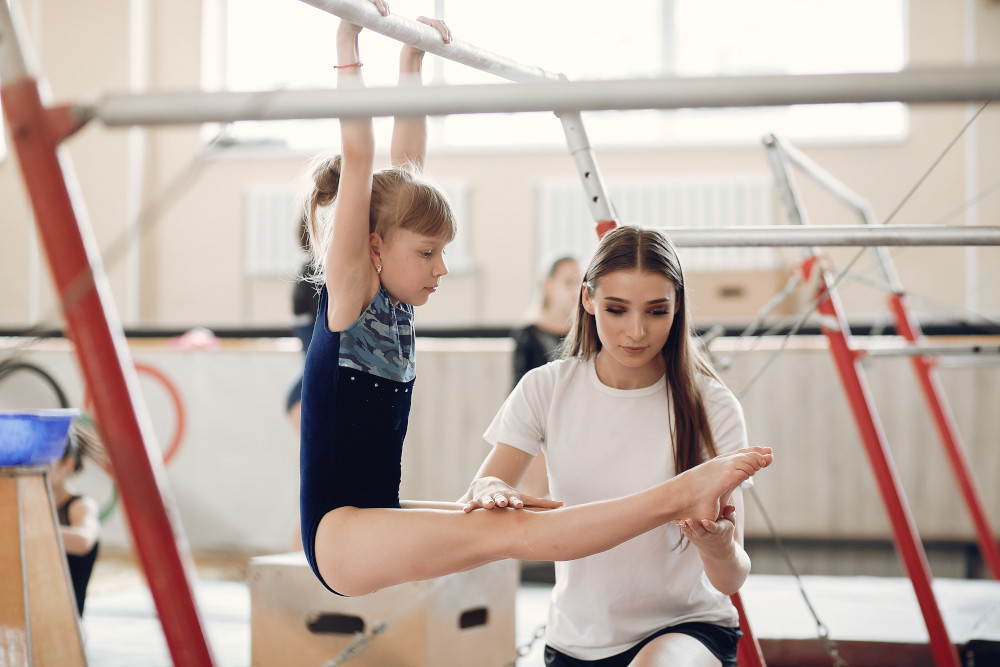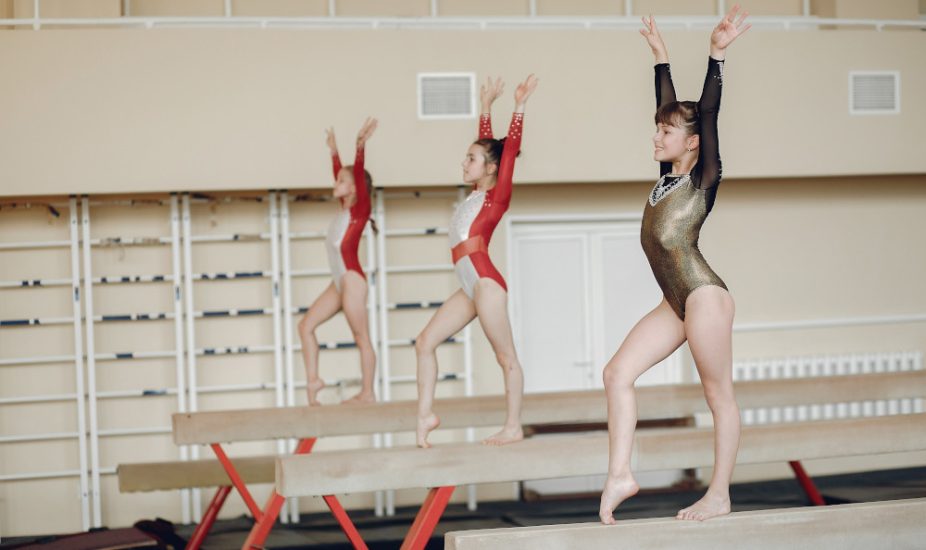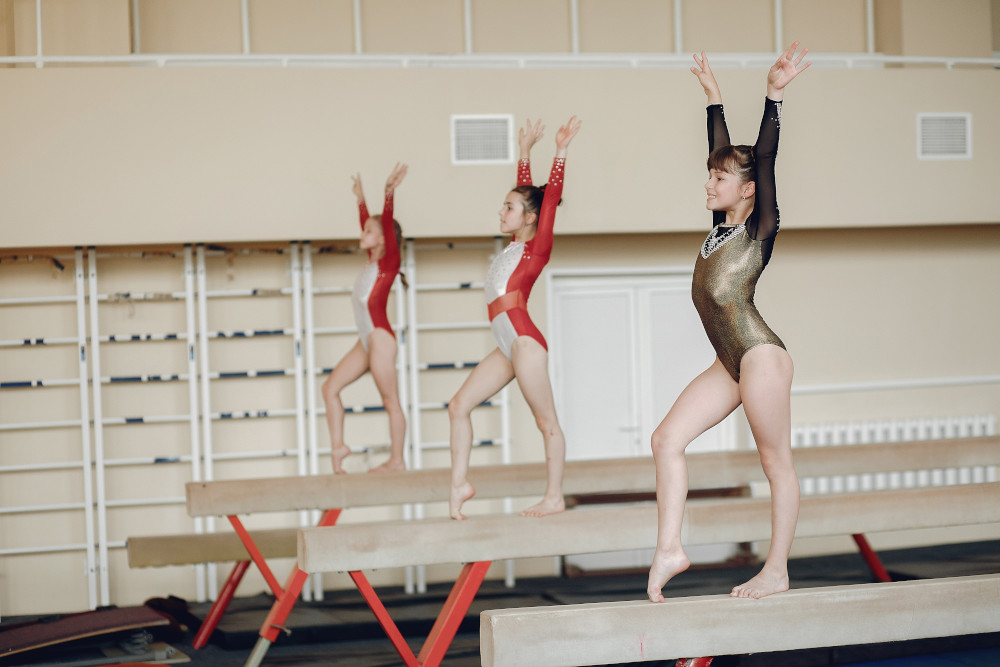This article provides valuable insights and practical tips for gymnasts who are dealing with wrist pain. Gymnast wrist pain is a common issue that can significantly impact performance and hinder progress. By understanding the causes and symptoms of wrist pain, implementing proper warm-up and cool-down exercises, following effective stretching techniques, and considering the role of nutrition and wrist supports, gymnasts can alleviate pain, prevent further injuries, and maintain healthy wrist joints. This article offers guidance on modifying gymnastics routines, emphasizing the importance of rest and recovery, and knowing when to seek medical attention. With long-term strategies for prevention and maintenance, gymnasts can overcome wrist pain and continue to excel in their sport.
Gymnastics is a physically demanding sport that requires strength, flexibility, and precision. However, the repetitive and high-impact nature of gymnastics can often lead to injuries, with wrist pain being one of the most common complaints among gymnasts. Wrist pain can have a significant impact on a gymnast’s performance and overall well-being, helping address and prevent this issue. By understanding the causes and symptoms of wrist pain, implementing proper warm-up and cool-down exercises, utilizing effective stretching techniques, and incorporating rest and recovery into training schedules, gymnasts can reduce the risk of wrist pain and maintain healthy wrist joints.
Key Takeaways
- Wrist pain can be caused by overuse, improper technique, and growth-related issues.
- Proper warm-up and cool-down exercises can help prevent wrist pain.
- Tips for relieving wrist pain include icing, rest, and modifying routines.
- Nutrition plays a role in preventing and treating wrist pain.
- Wrist supports and braces can provide benefits for gymnasts with wrist pain.
Understanding Gymnast Wrist Pain: Causes and Symptoms
Gymnast wrist pain can be caused by a variety of factors, including overuse, improper technique, and repetitive stress on the wrists. The repetitive nature of gymnastics activities, such as handstands, cartwheels, and flips, can put excessive strain on the wrists, leading to inflammation and pain. Improper technique, such as landing incorrectly or placing too much weight on the wrists during certain movements, can also contribute to wrist pain.
Symptoms of wrist pain may include swelling, stiffness, tenderness, and pain during movement. Gymnasts may also experience a decreased range of motion in their wrists and difficulty gripping or holding objects. Gymnasts need to pay attention to these symptoms and seek appropriate treatment to prevent further injury.
The Importance of Proper Warm-Up and Cool-Down Exercises for Wrist Pain Prevention
Proper warm-up and cool-down exercises prevent wrist pain. Warming up before training or competition helps increase blood flow to the muscles and joints, preparing them for the demands of gymnastics activities. This can help reduce the risk of injury by improving flexibility and range of motion in the wrists.
Specific exercises that can be incorporated into a warm-up routine to prevent wrist pain include wrist circles, wrist flexion and extension exercises, and forearm stretches. These exercises help to warm up the muscles and joints in the wrists, increasing their flexibility and reducing the risk of injury.
Cooling down after training or competition is equally important for preventing wrist pain. Cooling down helps to gradually decrease heart rate and blood flow, allowing the body to recover more effectively. This can help reduce muscle soreness and stiffness, which can contribute to wrist pain.
Top Tips for Relieving Wrist Pain During Training and Competitions

While prevention is key, there may be times when gymnasts experience wrist pain during training or competitions. In such cases, several strategies can be employed to manage and relieve the pain.
One of the most important strategies is to take breaks and rest the wrists when pain occurs. Continuing to train or compete through the pain can exacerbate the injury and prolong recovery time. Applying ice to the affected area can also help reduce pain and inflammation. Ice should be applied for 15-20 minutes at a time, with a towel or cloth between the ice pack and the skin to prevent frostbite.
Massage and stretching techniques can also be effective in reducing pain and inflammation in the wrists. Gentle massage can help increase blood flow to the area, promoting healing and reducing muscle tension. Stretching exercises that target the wrists and forearms can help improve flexibility and relieve tightness, reducing pain in the process.
The Role of Nutrition in Preventing and Treating Wrist Pain
Proper nutrition plays a crucial role in overall health and injury prevention for gymnasts. Consuming a well-balanced diet that includes a variety of nutrients can help support healthy joints and reduce the risk of wrist pain.
Certain nutrients are particularly beneficial for preventing and treating wrist pain. Omega-3 fatty acids, found in fatty fish, walnuts, and flaxseeds, have anti-inflammatory properties that can help reduce pain and inflammation in the wrists. Vitamin C, found in citrus fruits, strawberries, and bell peppers, is important for collagen production, which helps maintain healthy joints. Calcium and vitamin D, found in dairy products, leafy greens, and fortified foods, are important for bone health and can help prevent fractures and injuries.
It is also important for gymnasts to stay hydrated. Drinking enough water throughout the day helps keep the joints lubricated and can reduce the risk of injury.
The Benefits of Wearing Wrist Supports and Braces for Gymnasts
Wrist supports and braces can be beneficial for gymnasts who experience wrist pain or want to prevent it. There are several types of wrist supports and braces available that provide different levels of support and stability.
Wrist wraps are a common type of support that can be worn during training or competition. They provide compression and support to the wrists, helping to reduce pain and stabilize the joint. Wrist braces are another option that can be worn during activities or while resting. They provide more rigid support and immobilization, which can be helpful for more severe cases of wrist pain or injury.
The benefits of wearing wrist supports and braces include reducing pain, providing stability during activities, and preventing further injury. They can also help improve proprioception, which is the body’s awareness of its position in space. This can help gymnasts maintain proper technique and form during movements, reducing the risk of wrist pain.
Effective Stretching Techniques for Wrist Pain Relief
Stretching is an important component of any gymnast’s training routine and can be particularly beneficial for relieving wrist pain. Stretching exercises help improve flexibility in the wrists and forearms, reducing muscle tension and relieving pain.
Some effective stretching techniques for wrist pain relief include wrist flexion and extension stretches, wrist rotations, and forearm stretches. These stretches should be performed gently and gradually, without forcing the joint beyond its comfortable range of motion. It is important to listen to the body and stop if any pain or discomfort is felt.
Stretching should be incorporated into both warm-up and cool-down routines to maximize its benefits. Performing these stretches regularly can help improve flexibility in the wrists and reduce the risk of injury.
How to Modify Gymnastics Routines to Prevent Wrist Pain
Modifying gymnastics routines can be an effective strategy for reducing stress on the wrists and preventing wrist pain. By making small adjustments to movements and techniques, gymnasts can reduce the impact on their wrists while still maintaining proper form and technique.
One strategy for modifying gymnastics routines is to focus on strengthening the muscles in the wrists and forearms. This can be done through specific conditioning exercises that target these areas, such as wrist curls, forearm planks, and fingertip push-ups. Strengthening these muscles can help provide more support and stability to the wrists, reducing the risk of pain and injury.
Another modification technique is to adjust landing techniques to minimize impact on the wrists. This can include landing with a slightly bent elbow or using mats or padding to cushion the landing. By reducing the force placed on the wrists during landings, gymnasts can help prevent wrist pain and injury.
The Importance of Rest and Recovery for Wrist Pain Management
Rest and recovery are components of injury management and prevention for gymnasts. Giving the body time to recover between training sessions allows for the healing and repair of tissues, reducing the risk of overuse injuries such as wrist pain.
Incorporating rest days into training schedules is important for allowing the body to recover. This can include taking one or two days off from intense training each week, as well as incorporating lighter training sessions or cross-training activities that do not put excessive strain on the wrists.
During rest periods, it is important to prioritize activities that promote recovery, such as getting enough sleep, eating a nutritious diet, and practicing stress management techniques. These activities help support the body’s natural healing processes and can reduce the risk of wrist pain and other injuries.

When to Seek Medical Attention for Wrist Pain
While many cases of wrist pain can be managed with rest, stretching, and other self-care techniques, there are times when medical attention may be necessary. It is important for gymnasts to be aware of the signs that their wrist pain may require medical attention.
If wrist pain persists or worsens despite rest and self-care measures, it may be a sign of a more serious injury that requires medical evaluation. Other signs that medical attention may be necessary include severe swelling, inability to move the wrist or grip objects, and numbness or tingling in the hand or fingers.
Seeking medical attention for wrist pain is important for proper diagnosis and treatment. A healthcare professional can perform a thorough evaluation, order any necessary imaging tests, and provide appropriate treatment recommendations based on the specific injury or condition.
Long-Term Strategies for Preventing Wrist Pain and Maintaining Healthy Wrist Joints
Preventing wrist pain requires a long-term approach that focuses on proper technique, conditioning exercises, and injury prevention strategies. By implementing these strategies consistently over time, gymnasts can reduce the risk of wrist pain and maintain healthy wrist joints.
One of the most important long-term strategies is to prioritize proper technique and form during gymnastics movements. This includes landing correctly, distributing weight evenly across the hands and wrists during handstands and other weight-bearing activities, and avoiding excessive strain on the wrists.
Conditioning exercises that target the muscles in the wrists and forearms are also important for preventing wrist pain. These exercises can help strengthen the muscles, improve stability, and reduce the risk of injury. Examples of conditioning exercises include wrist curls, forearm planks, and fingertip push-ups.
Regularly incorporating rest and recovery into training schedules is another key long-term strategy for preventing wrist pain. Giving the body time to recover between training sessions allows for healing and repair of tissues, reducing the risk of overuse injuries.
Wrist pain is a common issue that can have a significant impact on a gymnast’s performance and overall well-being. By understanding the causes and symptoms of wrist pain, implementing proper warm-up and cool-down exercises, utilizing effective stretching techniques, incorporating rest and recovery into training schedules, and seeking appropriate medical attention when necessary, gymnasts can reduce the risk of wrist pain and maintain healthy wrist joints. Prioritizing injury prevention and management allows gymnasts to continue enjoying their sport and performing at their best. Your first step toward healing and feeling better is to schedule an appointment for a professional evaluation. Schedule an appointment today – complete and submit the request form by the link: https://sportscare-armworks.com/request-an-appointment/. Choose the preferred service and location in the Portland area. If you contact us after business hours, we will get back to you the next business day. We look forward to hearing from you!
Don't let pain or limited mobility hold you back.
Contact us now to schedule your appointment and regain strength through personalized physical therapy sessions. Take charge of your health and well-being today!
Request An AppointmentFrequently Asked Questions
-
What is gymnast wrist pain?
Gymnast wrist pain is a common injury that occurs in gymnasts due to the repetitive stress placed on the wrist during training and competition.
-
What are the symptoms of wrist pain?
Symptoms of gymnast wrist pain include pain, swelling, stiffness, and weakness in the wrist and hand.
-
What causes wrist pain?
Gymnast wrist pain is caused by the repetitive stress placed on the wrist during gymnastics training and competition. This stress can cause small fractures or micro-tears in the bones and ligaments of the wrist.
-
How is wrist pain diagnosed?
Gymnast wrist pain is diagnosed through a physical examination and imaging tests such as X-rays or MRI scans.
-
What is the treatment for wrist pain?
Treatment for gymnast wrist pain includes rest, ice, compression, and elevation (RICE), physical therapy, and in severe cases, surgery.
-
How can wrist pain be prevented?
Gymnast wrist pain can be prevented by using proper technique during training and competition, wearing wrist supports, and gradually increasing the intensity and duration of training.


